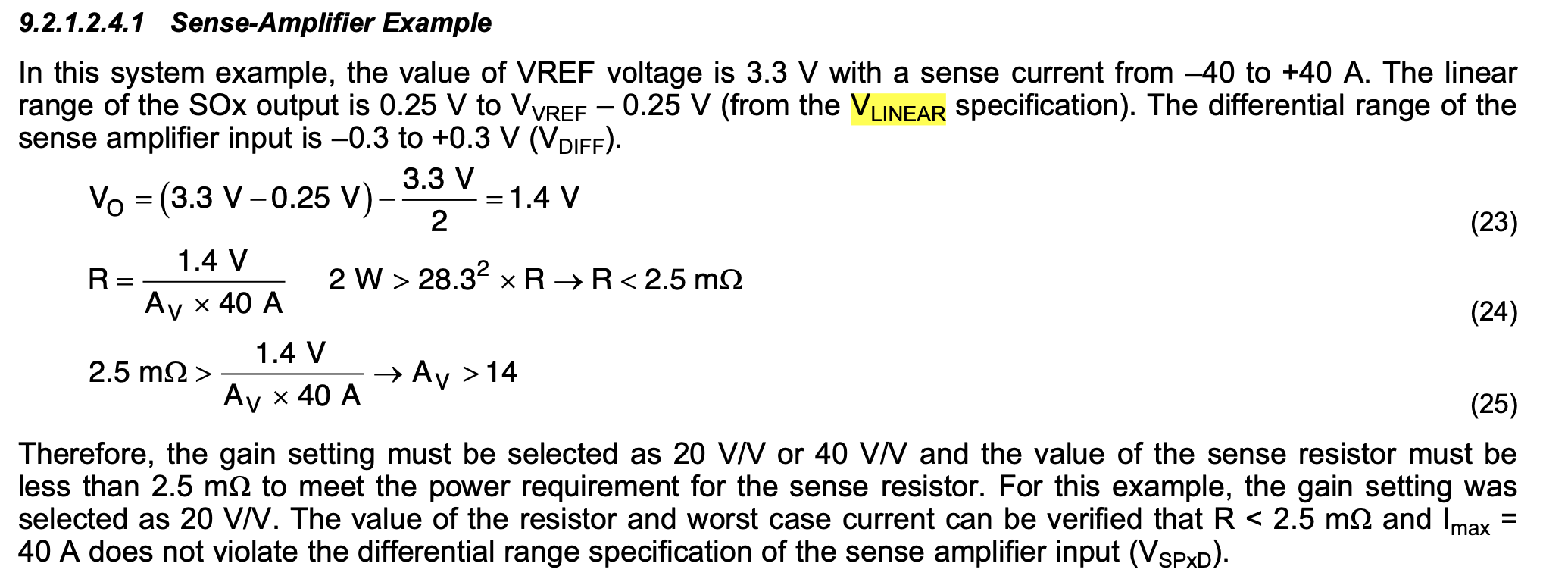Hi,
I have a question regarding gain setting, regarding the chapter 9.2.1.2.4.1:
Questions
1) Why does Av must be larger then 14? What happens if it is set to 10 in this example? What voltage would be the analog output of the amplifier at 0A and at 40A?
Now to my schematic:
I have a 3W, 7mOhm shunt resistor. My VREF is 3.3V. So my Vo is the same 1.4V like in your example. Let's say I would like to have 20A peak --> 14.1A RMS. So this would be less then 3W.
According to equation above would be my Av calculation: Av > 1,4/0.007/20 > 10. Can I go with 10? What happens if I choose 20 or 5 ? My ADC of the uC is limited to the 3.3V (VREF). If I would like to increase the amps in future: What would be your suggestion im amplifier gain? Or should I go with a lower shunt resistor value ?
Thanks in advance.


